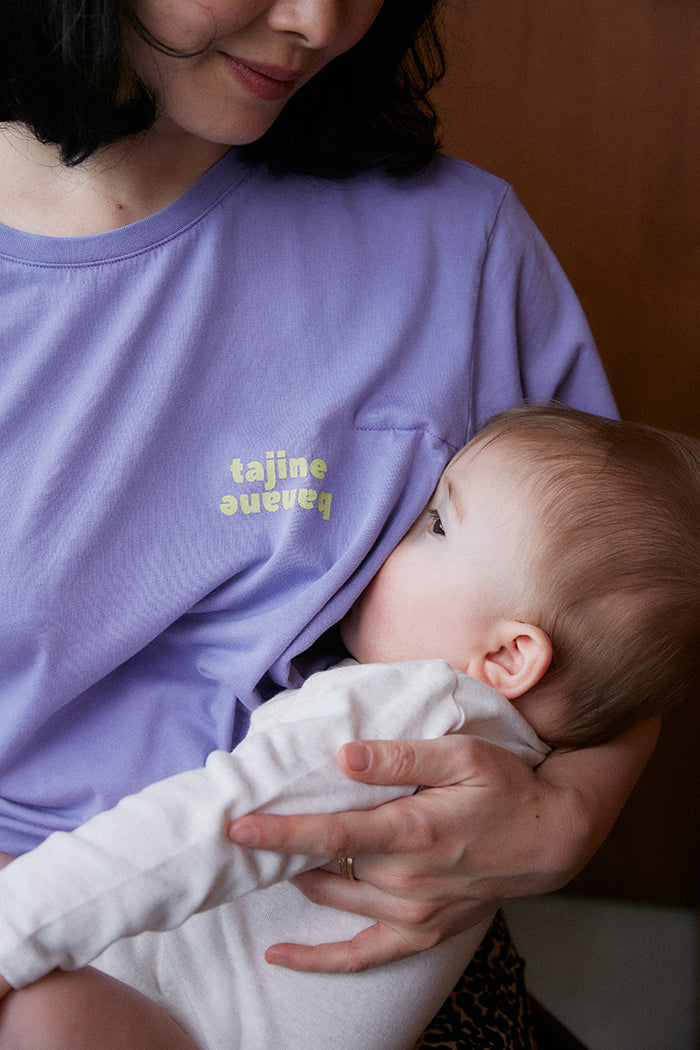Dans cet article, vous retrouverez les principaux conseils choisir le bon matériel pour votre tire-allaitement. N'oubliez pas : votre meilleur allié sera (toujours) la confiance en vous et en votre corps.
Tire-allaitement : le bon matériel
Ca ne fait pas de mal de le rappeler : le tire-allaitement est un type d'allaitement et les bébés nourris au biberon ou tout autre contenant alternatif au sein, bénéficient des mêmes bienfaits sur le plan nutritionnel et immunitaire.
Certaines mamans font le choix d'un tire-allaitement exclusif, mais de manière générale, le tire-allaitement est utilisé comme alternative à l'allaitement au sein. Quelles soient personnelles (vous souhaitez vous absenter de temps en temps), médicales (bébé né prématurément, raisons anatomiques) ou professionnelles (reprise du travail), chaque raison est unique et doit être respectée.
Toujours est-il que le tire-allaitement est, pour beaucoup d'entre vous, perçu et vécu comme compliqué… notamment dans le choix du tire-lait.
Le saviez-vous ? Normalement, un forfait de mise en route est prévu pour qu'un.e professionnel.le de santé (généralement le.la pharmacien.ne auprès de qui vous louez votre tire-lait) s'assure qu'il vous convient.
▹ Quel tire-lait choisir ?
Les tire-laits sont disponibles à la vente ou à la location. La location s’effectue sur ordonnance (délivrée par votre sage-femme, médecin généraliste ou gynécologue) auprès de votre pharmacie ou de sites spécialisés. Les modèles disponibles à la location sont souvent des modèles encombrants et peu pratiques ; certaines d'entre vous péfèreront donc investir dans l'achat d'un tire-lait nomade et compact, sans fils ni tuyaux pour pouvoir tire-allaiter partout, tout le temps.
‣ Le tire-lait électrique
Idéal pour : tirer votre lait quotidiennement ou de façon régulière, ou augmenter ou relancer la production de lait.
Le tire-lait éléctrique se décline en version :
- Compact ou classique
- Sur batterie ou sur secteur
Reco de la Mif’ : optez pour le double pompage, qui vous permet d’exprimer votre lait 2 fois plus vite et en un peu plus grande quantité, car quand vous tirez sur un seul sein, du lait s’écoule de l’autre (et se perd). Il existe des noms des coupelles de recueil de lait, très pratiques.
‣ Le tire-lait manuel
Idéal pour : un tirage occasionnel lorsque vous vous absentez de temps en temps ou pour exprimer un peu de lait pour éviter l’engorgement.
Moins pratique pour : faire des stocks ou tirer plusieurs fois par jour car il ne vous permettra d’exprimer du lait qu’un sein à la fois et vous demandera une certaine endurance manuelle.
La plupart des tire-laits manuels demandent d’avoir le coup de main, mais rassurez-vous il se prend très vite ! Compact, silencieux, il se glisse dans votre sac en toute discrétion. Le modèle de tire-lait manuel Elvie est un des plus pratiques : il se place dans votre brassière et, par une simple pression, active le pompage.
▹ La taille des téterelles
Tirer du lait avec des téterelles qui ne seraient pas adaptées c’est comme faire une randonnée avec des chaussures trop petites : ça fait mal et on n’est pas efficace.
Une bonne téterelle c’est :
‣ Une téterelle adaptée à votre mamelon : mesurer le diamètre de celui-ci après la tétée, en ajoutant 2 mm. La taille peut évoluer au cours de l’allaitement.
‣ Une téterelle bien placée : centrée sur votre mamelon. Celui-ci doit faire des mouvements de va et vient sans frotter contre les bords de la téterelle.
▹ Les accessoires complémentaires
‣ Les brassières tire-lait, sorte de kit-mains libres pour tire-lait : un soutien-gorge prévu pour exprimer son lait facilement, grâce à des ouvertures renforcées pour maintenir les téterelles pendant l’expression.
Petite astuce : vous pouvez en fabriquer avec un haut de collant : coupez les jambes, conservez la partie épaisse et faites deux petits trous pour mettre les téterelles.
‣ Un haut Tajinebanane : les ouvertures latérales sur nos vêtements vous permettent d’allaiter et de tirer votre lait partout, tout le temps, de façon discrète.
‣ Les coussinets d’allaitement : pratiques pour éviter les fuites. Ils existent en lavables, très pratiques et écologiques. Elvie va encore plus loin avec ses coupelles pour récupérer le lait qui fuit et ne plus jamais gâcher d'or blanc.
‣ Les sachets de conservation : pré-stérilisés et étanches, vous pouvez verser votre lait directement dedans pour une conservation au réfrigérateur ou congélateur. Les pots de confiture peuvent aussi faire l’affaire, le verre étant la matière idéale pour la conservation du lait maternel.
‣ Une glacière avec des pains de glace pour le transport : si jamais vous tirez votre lait sans avoir accès à un frigo, vous pouvez utiliser un sac isotherme. Le lait se conserve 24h dans une glacière avec des pains de glace (15 degrés).










